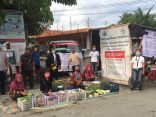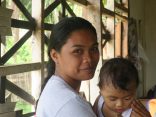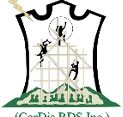by Celso B. Dulce, Jr.
In photo: The changes to the Kalawahig-1 bridge over the years. It was in disrepair already before Sendong (a), was strengthened with CARE’s assistance (b), damaged by Pablo and rebuilt painstakingly by the community (c), and is now much safer for the people who cross everyday (d).
The sight that greeted the rare visitor to Barangay Langaon was unexpected, and inspiring. Men and women, including some elderly, were busy repairing the hanging bridge known as Kalawahig-1.
This is an updated version of the previous story “The Bridge of Resilience,” also by the same author.
by Celso B. Dulce, Jr.
In photo: The changes to the Kalawahig-1 bridge over the years. It was in disrepair already before Sendong (a), was strengthened with CARE’s assistance (b), damaged by Pablo and rebuilt painstakingly by the community (c), and is now much safer for the people who cross everyday (d).
The sight that greeted the rare visitor to Barangay Langaon was unexpected, and inspiring. Men and women, including some elderly, were busy repairing the hanging bridge known as Kalawahig-1. Some were erecting two concrete posts where steel cables of the bridge will be re-anchored. Some were replacing the wooden planks. Some were gathering rocks from the riverbed and piling them into an embankment that will strengthen the bridge’s foundation. Two days ago, the bridge was washed out by a flashflood spawned by typhoon Pablo (Bopha).
Typhoon Sendong (Washi) damaged the Kalawahig-1 suspension bridge that connects barangay Langaon to “the outside world.” The bridge was already in a state of disrepair prior to Sendong. The flooring was made of bamboo. The sides were unprotected and anybody, but most especially children, could easily fall into the river. The bridge was in urgent need of repair as the community could not bring their farm produce to the market, could not safely access relief assistance and basic services, and could not bring in basic commodities.
In March 2012, CARE worked with the community to undertake minor repair of the bridge, as part of the cash-for-work activity. Cyclone wires were installed on the sides of the bridge to prevent people from falling into the river. Rotting bamboo were replaced to strengthen the flooring. Community members were jubilant, feeling safer as they cross the bridge every day, to go to the market, and in general to do business with the outside world.
A follow-up CARE emergency response project provided another opportunity to further strengthen the bridge. It was built on the initiative of a local NGO, Green Mindanao, which constructed a concrete foundation for a new bridge, but could not afford complete rehabilitation. CARE provided thick steel cables, wooden planks, cyclone wire, nuts and bolts, and other materials to complete the bridge through another cash-for-work activity. In August 2012, the new bridge was completed. In no time, not only people were crossing the bridge but even motorbikes laden with produce. The bridge was affording people safe access to goods and basic services. It was also encouraging people to increase agricultural production and livelihood activities as the people can now safely transport farm inputs and farm produce.
On 5 December 2012, barangay Langaon lost its hanging bridge to a big flashflood triggered by typhoon Pablo. The news was very difficult to accept. According to Langaon residents, Ugiaban Bridge one kilometer upstream got clogged and formed a temporary dam. When this temporary dam burst, it unleashed a huge wall of water that reached up to the Kalawahig-1’s flooring. The residents of Langaon watched helplessly as a huge wall of water washed away their bridge. The Kalawahig-1 was built substantially higher than the original precisely to prevent it from being overtopped by floodwaters.
The Langaon community was able to retrieve all the bridge’s materials – the steel cables, the wooden planks, the nuts and bolts, the cyclone wires. With their meager resources, and without waiting for external assistance, the community started rebuilding their bridge.
“We appreciate very much the support we received from ACCORD and CARE and their donors. Such support enabled to rehabilitate our bridge. The damage caused by Pablo is a setback. Slowly maybe, but surely we will rebuild the bridge, because it is our bridge. More valuable than the material support we received from ACCORD and CARE is the confidence developed in us that by working together, we will be able to recover from the disasters that have affected us,” declared Barangay Chair Martin Tanio, as he showed the several kilograms of tie wire, the few bags of cement, and the few pieces steel reinforcement bars he bought using funds contributed by community members.
Kalawahig-1 was built through a project partnership amongst CARE, ACCORD and RMP, with funding support from the European Commission Humanitarian Aid and Civil Protection department (ECHO), AXA Philippines and Metrobank Foundation. Barangay Langaon is in Baungon municipality, Bukidnon province.
The people and the leaders of Langaon demonstrate the indomitable spirit of the poor and vulnerable, who aspire to make their communities more resilient. A visit to Langaon in October 2013 showed that the community, on its own, has restored the Kalawahig-1 bridge, their own bridge.
This is an updated version of the previous story “The Bridge of Resilience,” also by the same author.




